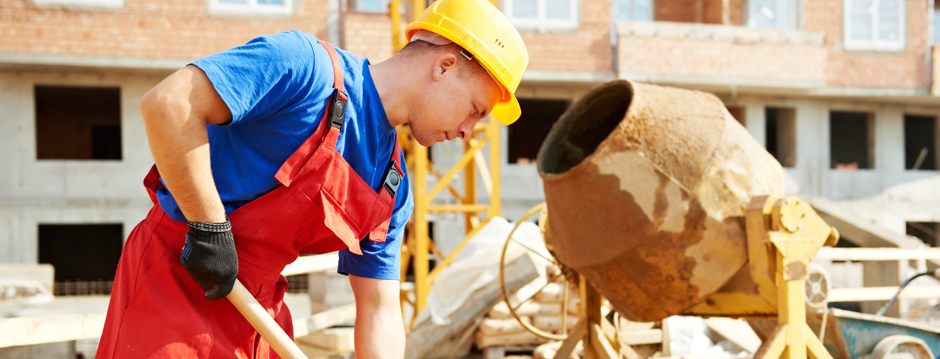
Protecting Yourself When Working On Sites
Employers and the main contractor on a work site are responsible for health and safety, but workers are responsible for ensuring you follow guidance and rules which are in place. You also must be aware of personal responsibilities.
There were 30 fatal injuries to workers in 2021/22p, according to HSE statistics. Working at height is one of the main causes of death in construction.
Risks and hazards to health and life may include:
- Falls
- Trips and slips
- Working at Height
- Working with power tools (including the risk of Hand Arm Vibration)
- Working with substances (such as cement)
- Lifting equipment
- Poor visibility and lighting
- Loud noises
- Airborne fibres
- Asbestos
How Can Workers Protect Themselves from Hazards On-Site?
Wear PPE
One of the easiest steps to be personally responsible for is ensuring the correct PPE for the job is worn. This includes:
- Hats and head protection
- Eye protection (safety goggles)
- Hearing protection
- Protective clothing (such as reflective clothing, disposable clothing or winter clothing)
- Gloves (whether thick, waterproof or high grip)
- Safety boots
- Breathing protection (such as masks)
Fall protection equipment will have to be in place for anyone working from height. This should be organised by site managers and Health and Safety organisers. Some employees may provide PPE, but if not, ensure you are well-equipped and have the correct items for the job.
Safely Use Equipment
All power tools and other similar equipment, such as cement mixers, should be checked for any issues before use. The good news is that if you hire any tools from Speedy, all items are checked before they are hired out again.
All tools also come with a user guide and safety manual which MUST be followed. In terms of those working on-site, individuals should be trained in using the tools, and have the necessary qualifications if applicable. Training is available from Speedy for anyone who will be specialising in certain tools, such as power saws or abrasive machines.
The area needs to be clear when tools are being used, so as to not injure anybody else or put them at risk of flying debris. And, as mentioned, PPE must always be worn when using any tools.
Checks and repairs must be carried out by a trained, competent individual, and you must stop using tools and equipment if there is an issue or you don't feel safe and confident.
Training for Working At Height
The Health and Safety Executive (HSE) found that 51% of deaths between 2017/18 and 2021/22 were due to a fall from height. Working from height is therefore the most common way for workers to become injured or die when on site.
Training is available for anyone undertaking these jobs and is vital whether the worker is on a ladder or on a multi-level platform. All of the suitable safety equipment must also be in place and regularly checked.
Scaffolding should be correctly erected and maintained and checked before every use. Avoid working at height in bad weather, and ensure fall protection is in place.
Minimise Working Alone
Accidents can happen when working alone, but importantly, it prolongs the time taken to act. From first aid beginning to calling for help, this delay can cost lives.
While some work needs to be carried out independently, workers should always have sufficient communication devices on their selves. Radios can be vital in areas where mobile phone signals and power facilities may not be available.
All members of staff should be accounted for at all times, so if you are going to work alone on a task, inform others where you're going, how long you expect to be gone, and what it is you are doing. Supervisors should visit and observe lone workers periodically, and regular contact should be made.
Be Aware of Moving Vehicles
If there are cars or other vehicles on site, you need to be aware of them. They should stick to designated paths; use traffic barriers to clearly separate walking and driving roads.
Ensure those driving the vehicles are aware of the hazards, including pedestrians and road structures. Signs are vital on construction sites, to warn others of vehicles and other hazards, so you are responsible for ensuring you see and take in the signs on site.
Speak Up
If something doesn't feel right, or you don't feel safe, speak up. Inform a manager or site supervisor if you're unsure about something, or feel a change should be made.
All construction workers have a right to work on a site where they feel safe and the risk of illness or injury is as low as possible.
- 2024
- 2023
- December 2023 (13)
- November 2023 (10)
- October 2023 (6)
- September 2023 (10)
- August 2023 (20)
- July 2023 (21)
- June 2023 (17)
- May 2023 (17)
- April 2023 (17)
- March 2023 (14)
- February 2023 (15)
- January 2023 (7)
- 2022
- December 2022 (6)
- November 2022 (12)
- October 2022 (24)
- September 2022 (14)
- August 2022 (12)
- July 2022 (15)
- June 2022 (18)
- May 2022 (14)
- April 2022 (9)
- March 2022 (5)
- February 2022 (5)
- January 2022 (2)
- 2021
- December 2021 (7)
- November 2021 (10)
- October 2021 (1)
- September 2021 (1)
- August 2021 (3)
- July 2021 (3)
- June 2021 (4)
- May 2021 (1)
- April 2021 (1)
- March 2021 (2)
- February 2021 (1)
- January 2021 (1)
- 2020
- 2019
- 2017
- 2016
- 2014
- 2013
- 2012
- 2011


